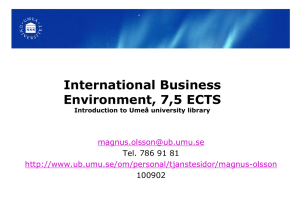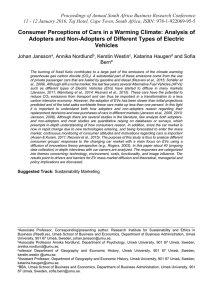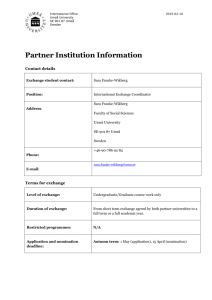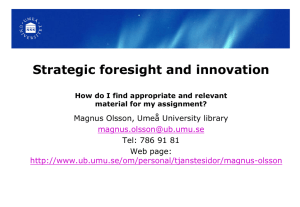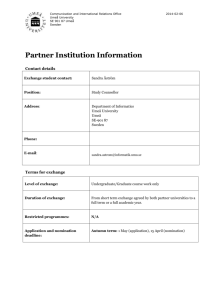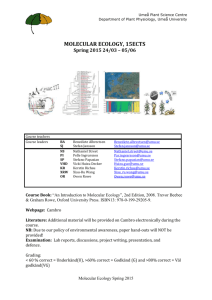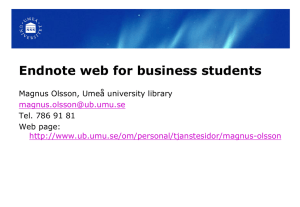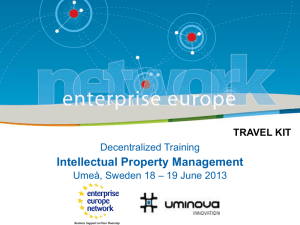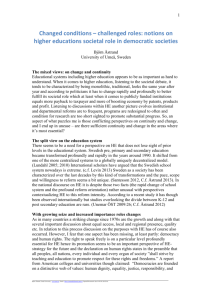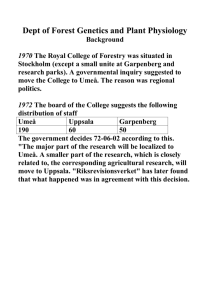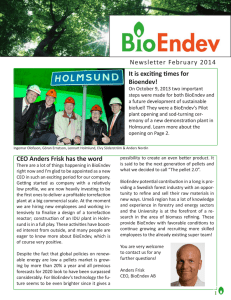using indirect methods to reveal food web interactions and
advertisement
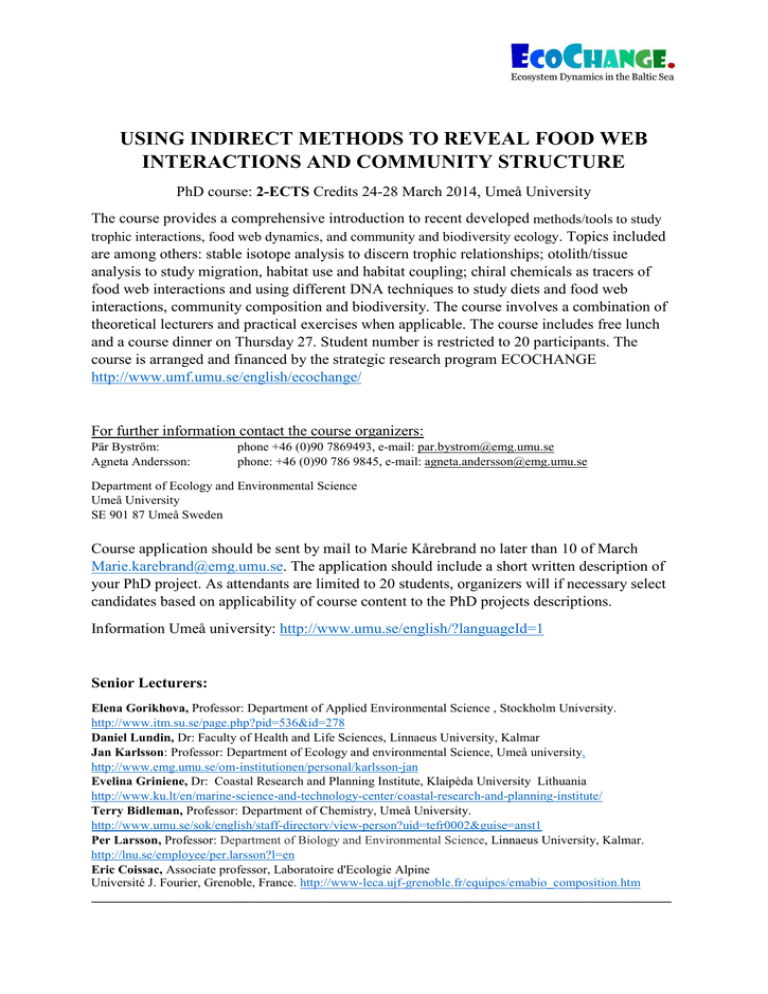
USING INDIRECT METHODS TO REVEAL FOOD WEB INTERACTIONS AND COMMUNITY STRUCTURE PhD course: 2-ECTS Credits 24-28 March 2014, Umeå University The course provides a comprehensive introduction to recent developed methods/tools to study trophic interactions, food web dynamics, and community and biodiversity ecology. Topics included are among others: stable isotope analysis to discern trophic relationships; otolith/tissue analysis to study migration, habitat use and habitat coupling; chiral chemicals as tracers of food web interactions and using different DNA techniques to study diets and food web interactions, community composition and biodiversity. The course involves a combination of theoretical lecturers and practical exercises when applicable. The course includes free lunch and a course dinner on Thursday 27. Student number is restricted to 20 participants. The course is arranged and financed by the strategic research program ECOCHANGE http://www.umf.umu.se/english/ecochange/ For further information contact the course organizers: Pär Byström: Agneta Andersson: phone +46 (0)90 7869493, e-mail: par.bystrom@emg.umu.se phone: +46 (0)90 786 9845, e-mail: agneta.andersson@emg.umu.se Department of Ecology and Environmental Science Umeå University SE 901 87 Umeå Sweden Course application should be sent by mail to Marie Kårebrand no later than 10 of March Marie.karebrand@emg.umu.se. The application should include a short written description of your PhD project. As attendants are limited to 20 students, organizers will if necessary select candidates based on applicability of course content to the PhD projects descriptions. Information Umeå university: http://www.umu.se/english/?languageId=1 Senior Lecturers: Elena Gorikhova, Professor: Department of Applied Environmental Science , Stockholm University. http://www.itm.su.se/page.php?pid=536&id=278 Daniel Lundin, Dr: Faculty of Health and Life Sciences, Linnaeus University, Kalmar Jan Karlsson: Professor: Department of Ecology and environmental Science, Umeå university. http://www.emg.umu.se/om-institutionen/personal/karlsson-jan Evelina Griniene, Dr: Coastal Research and Planning Institute, Klaipėda University Lithuania http://www.ku.lt/en/marine-science-and-technology-center/coastal-research-and-planning-institute/ Terry Bidleman, Professor: Department of Chemistry, Umeå University. http://www.umu.se/sok/english/staff-directory/view-person?uid=tefr0002&guise=anst1 Per Larsson, Professor: Department of Biology and Environmental Science, Linnaeus University, Kalmar. http://lnu.se/employee/per.larsson?l=en Eric Coissac, Associate professor, Laboratoire d'Ecologie Alpine Université J. Fourier, Grenoble, France. http://www-leca.ujf-grenoble.fr/equipes/emabio_composition.htm __________________________________________________________________________________________ Preliminary schedule 24-28 March Monday: 13.00 - 13.30 NC 250: Course intro PB/AA 13.30 - 17.00 NC 250: Elena Gorokhova Integrating molecular diet analysis, stable isotopes and feeding experiments for field applications. Tuesday: 09.00 - 12.00 NC 250 Daniel Lundin Molecular analysis of microbial communities in natural environments: Amplicon sequencing, metagenomics and metatranscriptomics 13.00- 17.00 Lab exercise Daniel Lundin Analysis of Illumina MiSeq-sequenced 16S amplicons Wednesday: 08.30 - 11.30 NC 280 Jan Karlsson Using stable isotopic analysis food webs interactions, trophic relationships and energy transfer within and between ecosystems 12.30- 15.00 NC 280: Lab exercise Jan Karlsson Mixing models Exercises and calculations 15.00 -17.00 NC 280 Evelina Griniene: Use of dilution techniques to measured predation in pelagic food webs Thurday: 09.00 - 11.30 NC 250 Terry Bidleman Chiral chemicals as tracers of food web interactions and pollutants sources 12.30 - 16.30 NC 280: Per Larsson Otolith/tissue analysis to study migration, habitat use and habitat coupling 19.00 - Friday: Course dinner 08.30 – 12.30 NC 280 Eric Coissac Using DNA metabarcoding techniques in studies of food webs interactions, trophic relationships and biodiversity ___________________________________________________________________________
